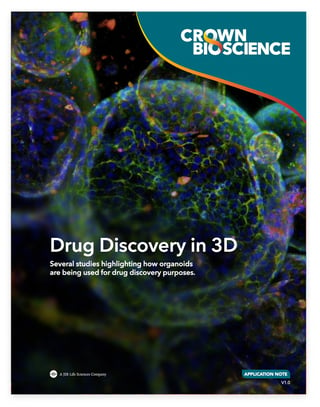- Our Services
- Platforms
- Target Solutions
- Technologies
- Service Types
- Our Science
- About Us
- Contact us

Drug development is an inherently lengthy and costly process that has a high rate of candidate attrition. The high attrition is in large part due to the poor translatability of preclinical data, including from early-stage in vitro drug screens, where 2D cell line cultures have traditionally dominated. While 2D cultures can be used to rapidly generate large datasets (since they are easy to manipulate and comparatively inexpensive), they fall short when it comes to clinical predictivity. While primary cell cultures are certainly more clinically and physiologically relevant than 2D cell lines, they have some limitations, particularly related to their variable reproducibility and that they are not consistently scalable or available to meet the demands of high-throughput drug screens.
Optimized Hubrecht Organoid Technology (HUB) protocols have been established to develop 3D in vitro organoids, from healthy and diseased tissue. They are superior models for in vitro drug screens and provide the best chance for drug candidates’ translatability, as they:
Your privacy is important to us.
We'll never share your information.
© 2025 Crown Bioscience. All Rights Reserved.
Privacy Policy | Imprint | Terms of Service | Privacy Preferences


© 2025 Crown Bioscience. All Rights Reserved. Privacy Policy
2025-01-16
2022-09-13
landing_page
In Vitro: Amplify Organoids